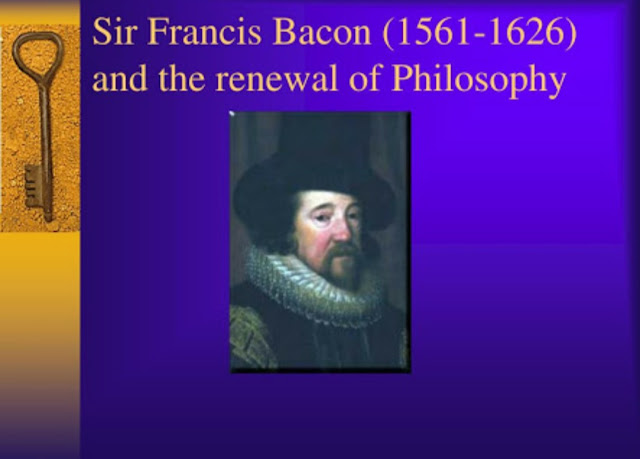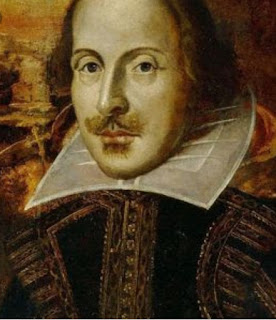Renaissance literature
To evaluate my assignment click here
Assignment- Paper 1. Renaissance Literature
Name – Gohil Dipti Ajaybhai
SEM – 1
Roll no -6
Enrollment no- 206910820190018
MKBU Department of English
Assignment topic – Prose writers of the Elizabeth age and their notable work
Introduction :-
The Elizabeth age is time period associated with the reign of Queen Elizabeth-1 [1558- 1603] and is often considered to be a golden age in English history. Milton's words
“A nobel and puissant nation , rousing herself, like a strong man after sleep and shaking her invincible locks.”
This quote through we can image that which type situation in Elizabeth age.
• What is prose ?
Prose is a long narrative literary work. It applies a natural flow of speech and ordinary grammatical structure rather than rhythmic structure, such as in the case of traditional poetry. Normal everyday speech is spoken in prose and most people think and write in prose form. Prose is divide into two :
1) Fiction for example short Story, Novels etc.
2) Non-fiction for example report, letter, Article, essay etc.
• Prose writers of the Elizabeth Age :
1) Francis Bacon [1561-1626]
2) Richard Hooker [1554-1600]
3) Sir Philip Sidney [1554-1586]
4) Sir Walter Raleigh [1552-1618]
5) John Foxe [1516-1587]
6) Camden and Purchas
7) Thomas North
They were great scholar who contributed a great deal to the enrichment of English prose.
1)Francis Bacon :
Francis Bacon was born on 1561. He was an English philosopher, statement, scientist, jurist, orator and author. He served both as Attorney general and as lord chancellor of England. After his death, his works remained influence in the development of the scientific method during the scientific revolution. He was the greatest prose writer of the late 16th and early 18th century and till today his essay are considered as of classic status. In Bacon we see one of those complex and contradictory fature which are the despair of the biographer. Most of Bacon's important work is in Latin. He believed that his works written in English would not receive any lasting impression. But it's pity that we remember Bacon for his essay writing in English. Bacon expressed himself both in English and Latin.
While a analysis Bacon's style we cannot separate matter and manner. The charm of Bacon's writing lies in his 'wit’, which means intellect as well as expression. It is the style , including both matter and manner, that is the man. Bacon had more than one style. He adapted his style to his purpose. Bacon now withdrew permanently from public life and devoted his splendid ability to literary and scientific work. He completed the essays, experimented largely, wrote history, scientific articles and one scientific novel.
• Bacon's work:
Scientific work
1)The Great Instauratio
2)Novum Organum (New Method)
3) Advancement of learning (Partition of Sciences)
4)Valerius Terminus: of the Interpretation of Nature
5) History of Life and Death
Religious and literary works
1)The New Atlantis
2) Essays
3)The Wisdom of the Ancients
4) Masculine Birth of Time
5) Meditationes Sacramento
6) Theological Tracts
7) An Advertisement Touching a Holy War
Bacon's philosophical works, The Advancement of Learning and the Novum Organum, will be best understood in connection with the Instauration Magna or The Great Institution of True philosophy, of which they were parts. The Instauratio was never completed, but the very idea of the work was magnificent, to sweep away the involved philosophy of the schoolmen and the educational systems of the universities, and to substitute a single great work which should be a complete education. His notable work :
The Instauratio Magna :
This was the most ambitious, though it is not the best known, of Bacon’s works. It was divided into six parts as follows :
1) Partitions of the sciences (De Augments Scientists)
2) New Method ( Novum Organum)
3) Natural History (Historian Naturalis)
4) Ladder of the Intellect (Scala Intellectus)
5) Anticipations of the 2nd philosophy (Anticipationes philosopher secunda)
6) The Second philosophy or Active Science (Philosophia Secunda aut Scientist Active)
2)Richard Hooker (1554-1600) :
In strong contrast with Bacon is Richard Hooker, one of the greatest prose writers of the Elizabeth Age. Hooker taking a single theme ,the law and practice of the English church, so handled it that no scholar Evan of the present day would dream of superseding it that no scholar building upon any other foundation than that which Hooker laid down.
• His works :
1)The laws of Ecclesiastical polity
2) Sermons
His one great work is The Laws of Ecclesiastical polity, a theological and stateliness of the English language.
3)Sir Philip Sidney (1554-1586) :-
Sir Philip Sidney was an evolutionary prose stylist and author of prose fiction, as well as one of the most influential poets and theorists of the Elizabeth period.
• His prose works:
1)Arcadia (a pastoral romance)
2) Defence of poesie (one of our earliest literary essays)
Sidney, whom the poet Shelley has eulogized, represents the whole romantic tendency of his age.
4)Sir Walter Raleigh (1552-1618)
The life of Raleigh is an almost incomprehensible mixture of the poet. Such a life in itself is a volume far more interesting than anything that he wrote. He is the restless spirit of the Elizabeth Age personified. Raleigh's chief prose works are Discoveries of Guiana, a work which would certainly have been interesting enough had he told simply . His other prose work is The last flight of the revenge. And the History of the world, written to occupy his prison hours. The history is wholly untrustworthy account of events from creation to the downfall of the Macedonian Empire. It is interesting chiefly for its style, which is simple and dignified, and for the flashes of wit and poetry that break into the fantastic combination of miracles, traditions, hearsay and state records which he called history.
5)John Foxe (1516-1587) :-
John Foxe was English historian and Martyrologist , the author of Acted and Monuments (popularly known as Foxe's book of Martyrs throughout western history, but emphasizing the sufferings of English protestants and proto-protestants from the 14th century through the reign of Mary-1.
We have a gloomy memory of Foxe, and something of a grievance, which prevent a just appreciation of his worth. Foxe had been driven out of England by the Marian persecution. On his return to England Foxe translated this work, calling it the Acts and Monuments, but it soon became known as the Book of Martyrs, and so it will always be called. Foxe's own bitter experience causes him to write with more heat and indignation than his saintly theme would warrant, and the holy tone sometimes spoils a narrative that would be impressive in its bare simplicity. Nevertheless the book has made for itself a secure place in our literature.
6)Camden and Knox :
William Camden and John Knox both were
Historical writers of the Elizabeth Age. They were stand out prominently among the numerous historical writers of the age. Camden's Britannia (1586) is a monumental work. He was marks the beginning of true antiquarian research in the field of history. His work Annals of Queen Elizabeth is worthy of a far higher place than has thus far been given it. John Knox was reformer writer. His work History of the reformation in Scotland. He has some very vivid portraits of his helpers and enemies in his work. The personal and aggressive elements enter too strongly for a work of history, but the autobiographical parts show rare literary power. His account of his famous interview with Mary Queen of Scots it through highlights the man's extraordinary power better than a whole volume of biolography.
7)Hakluyt and Purchas :
Hakluyt and Purchas both were editors in the Elizabeth Age. Richard Hakluyt (1552-1616), he was a clergyman who in the midst of little parish set himself to achieve two great patriotic ends. He was interested of the East India company. His work Principal Navigation, it is voyages and discoveries of the English nation. This book divine in three volumes, first published in 1589. The first volume tells of voyages to the north , the second to India and the East, the third, which is as large as the it other two, to the New world.
Samuel Purchas was also a clergyman, continued the work of Hakluyt, using many of the latter's unpublished manuscripts and condensing the records of numerous other voyages. His first famous book is Purchas, His Pilgrimage , he was followed by Hakluytus Postumus or Purchas His Pilgrimage, in 1625. The very name inclines one to open the book with Pleasure and he was best guides in literature. He was rarely disappointed.
8)Thomas North [1535-1601] :
Thomas North was an English justice of the peace, Military officer and translator of the Elizabeth Age. His translation into English of Plutarchs Parallel Lives is notable for being a source text used by William Shakespeare for several of his plays. North remains the most inspiring interpreter of the great biographer whom Emerson calls “ the historian of heroism”.
Conclusion :
This period is most regarded as greatest in the history of English literature. At that time prose writers Bacon, Richard Hooker, John Foxe and the historians Camden and Knox, the editors Hakluytus and Purchas, who gave us the stirring records of exploration and Thomas North was translator , their contribution in prose writing ,they were gave enrichment of English literature.
References – English literature by William J. Long
Total word - 1563







Comments
Post a Comment